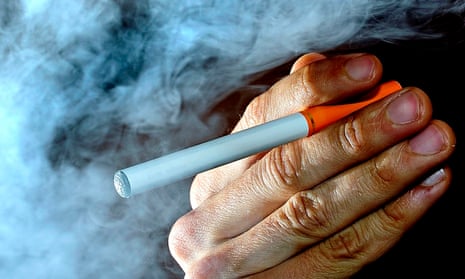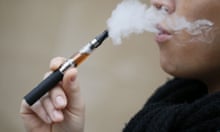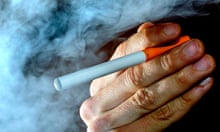Japanese officials will evaluate the possible impact on health of smoking e-cigarettes after researchers found that devices bought in Japan contain up to 10 times more formaldehyde - a cancer-causing substance - than conventional cigarettes.
The findings, announced this week, have re-ignited the debate over whether e-cigarettes are a risk-free alternative to tobacco smoking, as more young people take up the vaping habit.
Researchers at Japan’s National Institute for Public Health said they had found two carcinogens - formaldehyde and acetaldehyde – in vapour produced by several types of e-cigarettes during a study commissioned by the country’s health ministry.
One brand of e-cigarette produced 10 times more formaldehyde – a substance used in embalming that has also been linked to sick building syndrome – than a regular cigarette, said Naoki Kunugita, who led the research.
“Especially when the wire (which vapourises the liquid) gets overheated, higher amounts of those harmful substances seemed to be produced,” he told AFP. He added: “We need to be aware that some makers are selling such products for dual use (with tobacco) or as a gateway for young people [to start smoking].”
The experts analysed several cartridges of e-cigarette fluid using a machine that “inhaled” 10 sets of 15 puffs. One new brand of e-cigarette, whose name has not been made public, showed a more than 10-fold increase in formaldehyde levels in nine out of every 10 sets. The device produced 1,600 micrograms of formaldehyde per 15 puffs.
Health ministry officials acknowledged that the elevated formaldehyde levels found in a single brand of e-cigarette was not proof in itself that vaping posed an increased cancer risk.
“The most important finding is that the vapour contained recognised carcinogens,” Hiroyuki Noda, of the health ministry’s tobacco-free initiative, told the Guardian. “Our panel of experts will now look into what possible effects those substances could have on the health of e-cigarette users.”
Some experts said the findings offered no proof that e-cigarettes could harm papers’ health.
Writing on the e-cigarette research website, the Greek cardiologist Konstantinos Farsalinos said the offending device tested by Kunugita was “a single extreme case out of the many products he tested,” adding that the high formaldehyde reading may have been caused by several factors, including a faulty e-cigarette.
“Obviously, we have to realise that focusing the discussion on one of the tens of carcinogens present in tobacco cigarette smoke is misleading,” Farsalinos said.
“Even if e-cigarettes contained similar, or higher, levels of formaldehyde, they do not contain the majority of other toxic and carcinogenic substances present in cigarette smoke. Overall, any residual risk from e-cigarette use is orders of magnitude lower than smoking. This is exactly what smokers need (and deserve) to know.”
Kunugita said officials would evaluate vaping’s possible impact on health before discussing whether or not to regulate the sale and use of e-cigarettes in Japan.
Vaping is quickly gaining popularity in Japan, where cigarette smoking is still tolerated in many enclosed and public spaces, even though the smoking rate among adults is at an all-time low. Like many other countries, Japan does not regulate e-cigarettes, but they have yet to become widely available in shops. Most Japanese users order e-cigarettes and flavoured liquids online.
Until recently, e-cigarettes were hailed around the world as a safer alternative to smoking, and have been credited with helping tobacco smokers quit their old habit.
The number of young people in the US who have tried e-cigarettes tripled from 2011 to 2013, the US Centers for Disease Control and Prevention said, adding that more than a quarter of a million young people who had never smoked a cigarette used e-cigarettes last year.
In August, the World Health Organisation called on governments to ban the sale of e-cigarettes to minors, warning that they posed a serious threat to the health of children and unborn babies. Authorities in the Australian state of Queensland, meanwhile, have announced restrictions on the sale and advertising of e-cigarettes from next January.
But some health professionals have criticised attempts to restrict the availability of e-cigarettes, citing evidence that they are an effective smoking cessation aid.
Writing in the British Journal of General Practice, Prof Robert West and Dr Jamie Brown from University College London said that for every million smokers who switch from tobacco to e-cigarettes, more than 6,000 premature deaths would be prevented in the UK every year.
If all 9 million smokers took up e-cigarettes instead, 54,000 lives could be saved, they said.








Comments (…)
Sign in or create your Guardian account to join the discussion